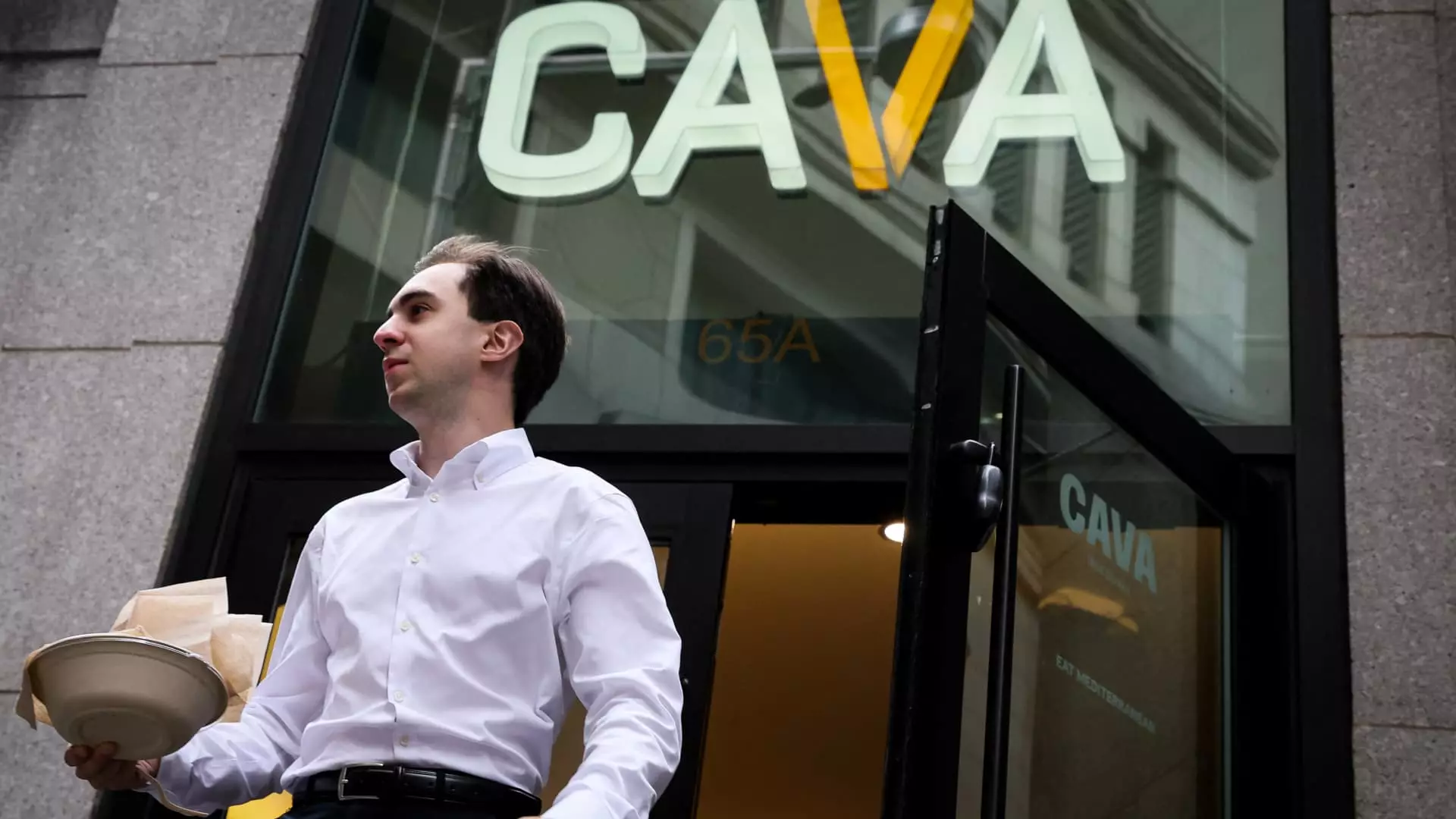In an era marked by economic uncertainty and shifting consumer behavior, the restaurant industry has undergone a profound transformation. What was once a luxury—being rewarded simply for patronage—has become a strategic necessity. Many fast-casual chains are now relying heavily on well-crafted loyalty programs to stabilize their sales and cultivate long-term customer relationships. Underneath this shift lies a recognition that consumers are increasingly seeking value and meaning in their spending, which brands are cleverly exploiting through innovative rewards systems.
The importance of loyalty programs extends beyond superficial discounts; they have evolved into vital tools for cultivating habitual patronage. During economic downturns, consumers become more selective, their discretionary spending scrutinized more intensely. In this climate, brands that can foster emotional attachment and perceived value through rewards become more than just convenient—they become indispensable. It’s no longer enough to have high-quality offerings; brands must embed themselves into the daily routines of consumers if they hope to survive and thrive in a competitive landscape. Consequently, loyalty programs are morphing into complex ecosystems designed not only to retain customers but to increase the lifetime value of their patronage.
Strategic Utilization and Creating Persistent Habits
Leading brands such as Starbucks and Chipotle illustrate how rewards programs are doubling as strategic arsenals to fight declining traffic and sales. Starbucks, with over 34 million active rewards members, exemplifies how digital engagement fuels profitability. Over half of its transactions in the U.S. are driven by loyalty members—a statistic that underscores how effectively engagement tools translate into sales. Chipotle, despite experiencing its first decline in same-store sales since 2020, remains heavily dependent on its loyalty base, which accounts for approximately 30% of daily sales.
These programs do more than just incentivize repeat visits; they subtly influence customer habits. Data reveals that loyalty members make roughly 22% more visits annually and return at twice the rate of non-members. This behavioral shift indicates that a well-executed loyalty strategy doesn’t merely attract customers—it alters their consumption patterns, making them more entrenched in the brand’s ecosystem. The key lies in personalization and continuous engagement. By designing programs that reward regular visits with not just discounts but meaningful perks—special challenges, limited-time offers, or exclusive items—brands deepen emotional bonds and foster tangible habits.
Innovation as a Response to Market Challenges
Few brands exemplify this adaptive approach better than Cava and Sweetgreen. Both turned to reimagining their loyalty programs amid a challenging economic environment. Cava revamped its program to offer more flexibility in earning and spending points, emphasizing surprise and delight moments—like free pita chips on special occasions—to cultivate goodwill and spontaneous engagement. Sweetgreen, on the other hand, moved away from confusing tiered subscriptions to a straightforward, value-driven rewards system. Such strategic recalibrations betray a fundamental insight: simplicity, flexibility, and relevance are crucial when consumers are making more deliberate choices.
Even industry giants like Starbucks are not immune to the pressures of innovation. The company recently altered its reward structure by removing some bonuses and instead doubling stars across all purchases. While purists initially pushed back, the broader participation rate remained steady, highlighting that concessions and adjustments are necessary to keep engagement alive amidst a challenging profit landscape. This willingness to adapt underscores a core truth: loyalty programs are more about strategic flexibility than rigid rules. Properly managed, they serve as dynamic mechanisms capable of responding to consumer sentiment and economic signals.
Tradeoffs and Long-Term Value Creation
Despite their benefits, loyalty programs are not without controversy. The costs of promotions—free items, discounts, bonus points—cut into margins, which are already razor-thin in the food industry. Yet, the tradeoff is justified if the long-term loyalty and increased frequency of visits compensate for short-term revenue dips. For brands like Potbelly, shifting to coin-based rewards increased engagement and prompted more visits, demonstrating that agility in reward structure can yield immediate positive results.
However, the real power of these programs becomes evident when they transcend transactional value. They serve as platforms for ongoing relationship-building—delivering not just discounts but experiential moments that embed a brand deeper into consumers’ routines. Campaigns like Chipotle’s “Summer of Extras” incentivize repeated visits through engaging challenges and incentives, subtly influencing customer behavior towards a more habitual, engaged consumption pattern. This is the hidden edge—loyalty programs craft an ecosystem of engagement that goes beyond a mere discount and fosters a thriving habitual relationship.
The Future of Loyalty—Rethinking Industry Norms
As the landscape continues to evolve, the future belongs to brands that view loyalty programs as core strategic assets, not just supplementary perks. The most successful chains will leverage data, personalization, and creative incentives to deepen the emotional connection, ensuring consumers see value not only in the products but in the ongoing relationship they have with the brand. The challenge is in balancing the cost of rewards with the long-term benefits of habitual spending—something that only masterful brands will master.
Rather than relying solely on price cuts or discounts, forward-thinking chains will find innovative ways to weave loyalty into their identity. Whether it’s through gamification, exclusive experiences, or surprise-and-delight campaigns, programs must evolve into narratives that resonate with consumers’ desire for meaning and value amid economic scarcity. The ones that do this best will emerge not just as surviving players but as dominant forces shaping the future of the restaurant industry—firmly rooted in the understanding that loyalty is an economic and emotional investment.

